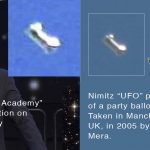The story of the reincarnation of Edgar Cayce is really involved with the solving of a mystery. Ra has been leaving a track of time-stamped clues throughout our history, and the uncovering of these clues is one of the things that helps to solve this mystery and to give credibility to the story. So, for the next clue, we need to understand the history of Ra-Ta as revealed in the spiritual framework of the Edgar Cayce Readings.
I will also draw on the hypnotic past-life regression, performed by renowned author and researcher Jess Stearn, of a person who the Cayce Readings said had lived during the period of Ra-Ta. This information was presented in Stearn’s 1993 book called “Intimates Forever”. (Jess Stearn also wrote perhaps the single most popular book about Cayce, entitled “The Sleeping Prophet.)
Before we discuss Ra-Ta, it will be important for certain readers to be assured that Cayce’s readings did not put the Ra group nor his own previous incarnation as Ra-Ta at the “top of the pyramid” in the spiritual sense. In the last chapter we saw how Ra used the word “Logos” to describe the personality of our Galaxy as a conscious being. In the Cayce Readings, it is stated that the Logos decided to take on personal Earth incarnations from the very beginning of our third-density cycle of experience. [This could well be due to the immense problems that had already occurred with Mars and Maldek.]
The original incarnation of the Logos was known as “Amilius,” who became the prototype for “Adam” in the book of Genesis. After many very historic spiritual incarnations including Melchizedek, Elijah and Moses, the final incarnation of the Logos on earth came about in the life of Jesus, who called himself “the last Adam.” Once Jesus completed his personal initiation, he began saying “I am the Logos,” which again is now translated to “I am the Word.” The Cayce readings also say that Jesus was the first person to complete this process of self-transformation, and that others would follow a similar path at the end of the cycle.
So, it is well known to Cayce scholars that the Logos is of central importance in directing human civilization on Earth; but certainly, one entity cannot be expected to manage all the responsibility by itself without having first differentiated itself into many different beings at different levels of density. The process of guarding, spiritually supporting and transferring souls from one planet to another requires a great deal of staffing, with contacts both in higher realms as well as on the planets themselves.
And thus, in a little-known prayer discovered by an associate of Wilcock’s, the Cayce Readings refer to the names “Ra” and “Ra-Ta” separately, indicating that they are two different entities, both of whom are responsible for such administrative tasks. Most A.R.E. members often overlook this point, yet it is perhaps the most direct clue in all of the Cayce Readings that his source was well aware of the Ra group.
According to the Cayce readings, Ra Ta was an early incarnation of Cayce in Egypt at 10,500 BC, and the context from Rueckert / LL Research’s work makes it clear that Ra had provided direct assistance to Ra-Ta at that time. The following story, derived from the Cayce Readings, is predominantly summarized from the book by W.H. Church entitled “Many Happy Returns, The Past Lives of Edgar Cayce” and the book by Mark Lehner entitled “The Egyptian Heritage.” Between these two books, all essential points of the story can be reconstructed.
Ra-Ta started his life by being born in a less-civilized area, ruled by the tribe of “Zu,” (perhaps the ancient Sumerians) somewhere between the Caspian Sea and the Caucasian Mountains. The Cayce Readings tell us that Ra-Ta was a very unusual child, in that he had pale white skin and blue eyes in an area where the others did not look this way. His mother explained that the “gods (think ETs) from that area” had engendered her pregnancy, hence making Ra-Ta an ET-human hybrid. Even though she was the daughter of the leader of the Zu / Sumerian tribe, the tribal elders were very spooked by the bizarre birth and appearance of Ra-Ta, as well as the problem that she did not have a husband, which was frowned upon in their culture.
Therefore, the elders ordered her and Ra-Ta to be banished from the land with a group of assistants to protect them. Over time, they made their way to the slopes of what is now Mount Ararat in Turkey. During this time period, the civilization of Atlantis had just begun spreading out into other areas from the central land of “Poseidia” in the area of what is now Cuba and Florida. The Turkish area that Ra-Ta and his mother came to had only recently started to have diplomatic relations with the Atlanteans, and thus was still behind the times in the technological sense.
As Ra-Ta grew up, it became clear that he had prophetic abilities and could channel very accurate psychic information. At 21 years of age he had a prophetic dream that a worldwide cataclysm would occur in the not-too-distant future. Most of the island continent of “Poseidia” was going to be inundated, and his own area would also suffer cataclysms. His intuition and scientific research on the Global Grid of “energy lines” combined to suggest that Egypt would be the safest place to go for weathering out these Earth Changes, since it was situated at the center of the Grid. (This has now been scientifically verified through studies of the Becker-Hagens grid, as reported in Wilcock’s Convergence series.)
When the Earth’s poles shifted, Egypt would be the balance-point for their movement. Ra-Ta communicated this prophecy to the King’s son Arart, and a pioneering group of 900 people led by Arart with Ra Ta as their spiritual leader made the journey from Turkey to Egypt.
After a long and arduous journey, they arrived in the Egyptian city of Luz. Initially there was mistrust and scrutiny, but eventually the Egyptians accepted the Atlanteans and exalted them. Arart was proclaimed King and Ra-Ta was accepted as their high priest. Over a period of time, spiritual and moral reforms were instituted by Ra-Ta and he became beloved by the people. He built temples for self-healing and transformation, and was able to perform many miraculous acts.
By this time, many other Atlanteans had been receiving visions of the coming inundation, and were emigrating away from the island continent of Poseidia in the Atlantic in droves. As part of what was “really a very busy life,” [294-148], Ra-Ta began using an Atlantean anti-gravitational craft to travel abroad and interact with the Atlanteans and other cultures over 10-year periods of time. During these travels, he learned much more about Atlantean science and technology, which included many very advanced concepts about how science and spirit fit together.
Furthermore, the Atlanteans wished to create a storehouse of their accumulated knowledge and wisdom so that it would not perish, and they also understood that Egypt would be one of three safest places for a copy of their records to be stored. Similar records were being prepared in Posiedia itself at the Temple of Ilta, and another location in the Yucatan area of Mesoamerica. Since Ra-Ta was the ambassador and spiritual leader of Egypt, negotiations were conducted with the Atlanteans about how to proceed in the process of storing and preserving the records.
Earlier in his spiritual ministry in Egypt, Ra Ta had instituted a moral code that included loyalty in marriage and communal living. Prior to Ra Ta, the custom was for men and women to be segregated and only come together in a special conjugal chamber for intimate encounters. After the third 10-year period in which he had been traveling abroad, he returned to Egypt and was horrified by what he had discovered: in the relatively short time since he had gone, his sacred temples had been converted into sexual playgrounds.
A great turmoil ensued as he rushed to condemn these actions, and certain individuals became very angry with him and started plotting a way to bring about his removal from power. As they observed him, they became aware that he was extremely fond of a young woman who danced in the temples named Isris. They were then able to cleverly trick and coerce Isris into seducing Ra-Ta.
Once Ra-Ta took the bait, the illicit affair was revealed, and the conspirators then pointed accusing fingers of how he had broken his own spiritual principles of monogamous marriage. To make matters worse, Isris was a favorite of Arart’s son “Araaraart,” who had become the new King. Jealousy and the desire for revenge can certainly go a long way, and in this case it led to the banishment of Ra-Ta and 231 followers who decided to go with him. They ended up in what now is called Ethiopia and what was then called Nubia. Ra Ta reflected with regret on the monumental consequences of his dalliance.
But wherever Ra Ta lived he carried his blessings with him, and the banishment only helped to further his soul evolution:
“With the entering into the Nubian land, there came such a change that there were the better conditions at every term that may be applied to human experience… As the priest in this creative period entered more and more into the closer relationships with the Creative Forces. Greater were the abilities of the entity or body Ra Ta to be able to make or bring about the material manifestations of that relationship… hence, the peace that was enjoyed by all those throughout the land…”
During his banishment, Ra-Ta met with an earlier human incarnation of the Logos known as Hermes, who later was honorably referred to as “Thothermes Trismestigus,” meaning “Thrice Greatest Hermes.” The Egyptians lauded him as “the scribe of the Gods” or “lord of divine words”. Hermes’ life is “shrouded in mystery” according to Church. He seemed to show up apparently “out of nowhere”. He had prophetic dreams and could look “forward and backward” in time, but he was low profile and self-effacing.
Hermes and Ra Ta were closely associated, and Cayce referred to Hermes as “the heart and the tongue of Ra.” Here, we must remember that Ra-Ta’s name was eventually shortened to just “Ra.” Therefore, this quote appears to mean that Hermes had as much of an influence on Ra-Ta as the sixth-density Ra group did.
The historical figure of Hermes is still heavily revered by the secret societies of today’s world, as can be seen by entering the National Museum of Art in Washington, DC, whereupon you soon walk into a giant three-story-high marble room ringed with magnificent black pillars and a huge statue of Hermes in the center. Most people do not think much about this connection, since Hermes was the patron of the arts in Greek mythology. Cayce was a Freemason himself, and thus it must have been a great surprise to his Masonic cohorts that his readings had indicated that Hermes was in fact an earlier incarnation of Jesus!
Meanwhile things were falling apart back in Egypt for King Araaraat. There was discontent amongst the people and uprisings without the calming vibration of Ra-Ta, even though he had often been out of town. Law and order was falling apart and the Atlanteans’ hopes and dreams for the future of Egypt were crumbling.
The King was having regrets over his banishment of Ra Ta. After nine years, the King finally rescinded the banishment decree and Ra Ta was allowed to return. In fact, this led to the King ending up as being just a figurehead while Ra Ta was exalted, but the King allowed this willingly, to permit the divine purpose inspired by Ra Ta to be reinstigated.
So peace and harmony reined once more in Egypt. Ra-Ta went on to live an unusually long life, which the Cayce Readings attribute to him spending a great deal of time within a pyramid in order to harness the rejuvenative energies that it produces. Church supposes that Hermes helped Ra reverse his aging trend as well.
It was during this period of the return from banishment that the pyramids were constructed. Cayce gave Hermes credit as the architect, while Ra Ta, now known as Ra, was the second most significant collaborator. By some esoteric means, the stones were levitated and set in place.
Jess Stearn, author of The Sleeping Prophet, released a book in 1993 called Edgar Cayce’s Mysteries of Reincarnation Ã




![DECLAS: Social Media Nukes An Entire Generation… But Why? [Free Ebook!]](https://divinecosmos.com/wp-content/uploads/2019/06/DECLAS_TT-150x150.jpg)











Hi David!,
Thanks for leaving this up. I know I’ve come back to this page quite a few times since it was first made available. It is very relevant to the work that I do. I appreciate you very much… maybe more than you might realize. I see people have profile pics etc. on their comments. Is there a group membership or something that I’m not yet seeing? I “joined our tribe!” already! LOL. Just now as a matter of fact.
Love & Light, Many Blessings, my friend!
Yet another commentary on the subject of our history which is highly complementary to other texts. Certainly, although listed with less detail here, further depth can be found is writings such as The Children of the Law of One & the lost teachings of Atlantis. And also, the Emerald Tablets of Thoth (the 12 +2 tablet version not the ‘philosophers stone’ short version). Be silent and be wise, listen to the silent voice of consciousness that communicates within you offering more wisdom in a moment than a thousand years of living in the flesh. Cast off the fetters of flesh and live a full life in the universe, instead of an existence on the planet earth. And to you, the elation that followings is simply a turning around within, to then see the whole time up until now, your consciousness has been facing the corner of the universe but believed to be the universe! How sweet it is to truly realise you are a child of the universe and are free to explore it in anyway you choose. Awake, O man, and know yourself.
Sometimes I wonder if we all are Anunnaki, using human vessels for eternal life. Love David’s work.
Exelente articulo, fascinante la vida de Ra Ta, Hermes y la influencia del grupo Ra, que opinan de lo que dice Drumbalo Melkisedek, es muy similar a esta historia, solo que situa a Hermes en la Atlantidad con su antiguo nombre Chiquetet Arlich Bomalies.
I can’t be the first to guess this but I have thought that Corey Goode is the reincranation of Jesus…. so that would make him hermes based on what im reading here. lol Its neat to go back and read old work like this. I feel like I understand with all the info I have now from David and Corey. LOVE YOU BOTH!!! LOVE EVERYONE WHO YOU TRUST!!!! LOVE LOVE LOVE
Of Much Importance: Each of us is every bit as Divine as Jesus Christ.
Yes good article…Amilus was the earth deity now called gaia..T
In the Cayce Readings it is stated that the Logos decided to take on personal Earth incarnations from the very beginning of our third-density cycle of experience? The original incarnation of the Logos was known as Amilius?
According to the Edgar Cayce Readings, THE GOD of the Holy Bible created all spirit-souls at-once in the beginning before matter was brought into being. Then after matter was brought into being one of those spirit-souls named Amilius came into the Earth among an entire group of spirit-souls along with him.
Amilius was not the Logos, nor an incarnation of the Logos, nor an original incarnation of the Logos. Amilius was and is a spirit-soul created by THE GOD of the Holy Bible, currently sitting at the right hand of THE GOD in heaven, awaiting to descend back to Mount Olives whence he last ascended from it (when incarnate as Jesus of Nazareth) once the enemy nations are gathered together in East Jerusalem as a footstool for his feet.
There once was, now is, and forever will be a great all enveloping universal consciousness that has the power to heal each and every being on this planet and all throughout the reaches of time and space given the unlocking of personal power and denial of falsehoods such as hatred and greed. Greed and hatred lye in of the same misunderstanding that it is possible for any of us to personally benefit or become “singular” from this connection.
I don’t mean to pounce upon your article, but Edgar Cayce was never a Freemason.
I read from two recent publications (magazine and a book) that stated that Ra Ta was from Atlantis. From my understanding he was from the Caucusus region and lead the people from this region to Egypt and later traveled to Atlantis to explore/learn from them. Has anyone come across this misunderstanding?
Hi David,
You wrote in the above article, “Cayce referred to Hermes as ‘the heart and the tongue of Ra.'” This is inaccurate, Church in his book mentions some research he did, and mentioned he came across an ancient Arabic legend or teaching that says Hermes was the heart and tongue of Ra. Cayce didn’t ever say that specifically, and all in all, says very little about “Hermes”, or about Ra Ta’s connection to him or vice versa.